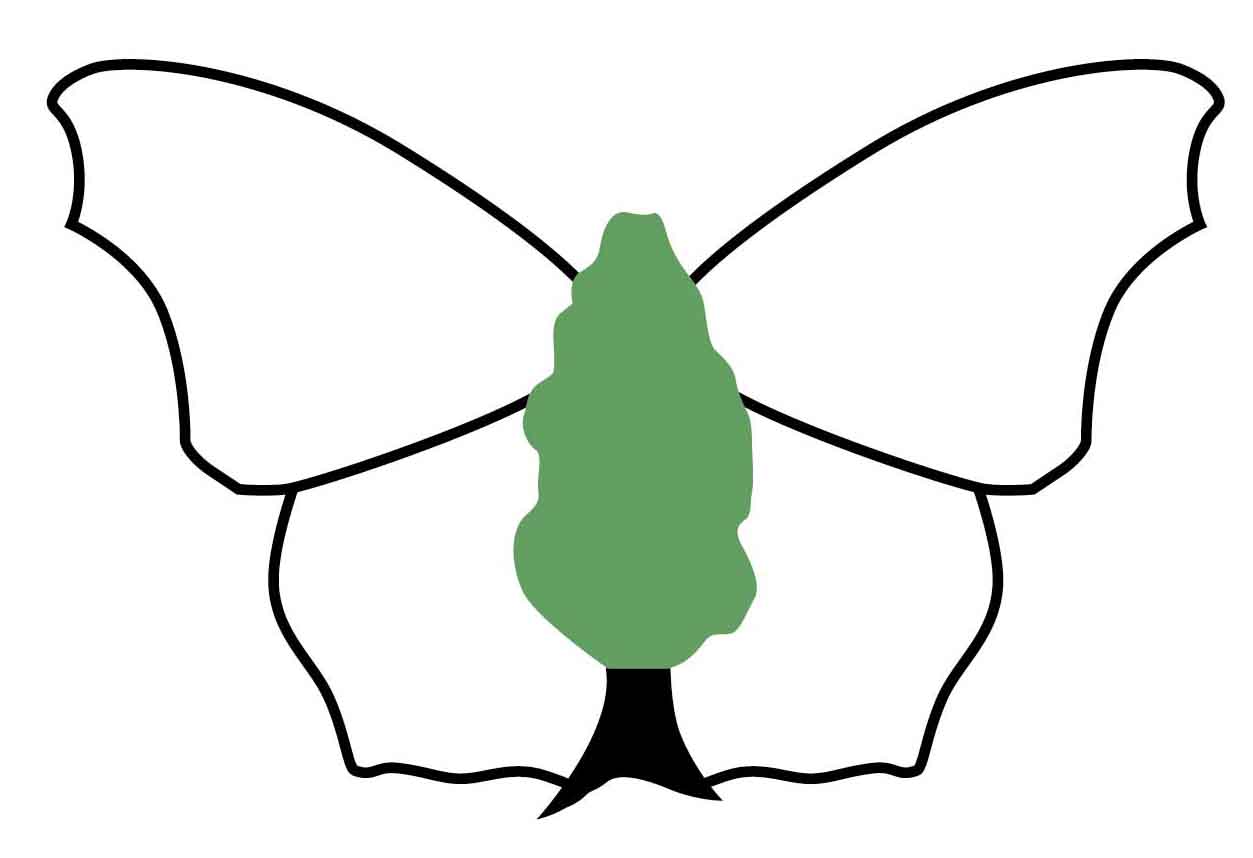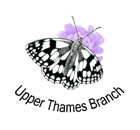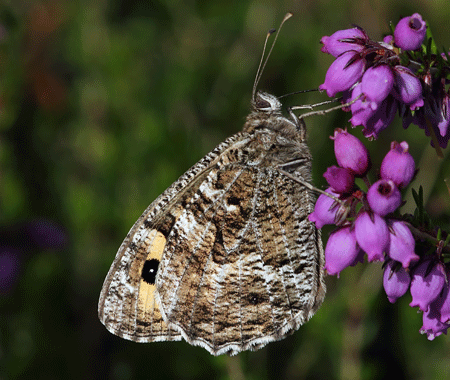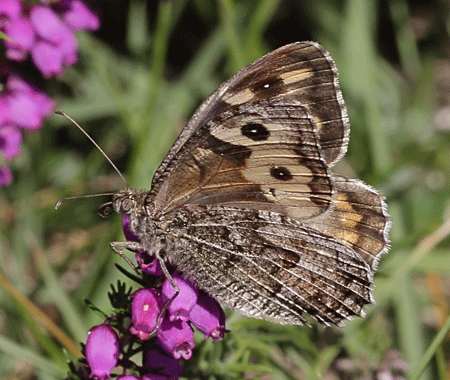 | Butterfly Conservation Saving butterflies, moths and our environment | Upper Thames Branch |  |
Grayling (Hipparchia semele) | ||||||||||||||||||||||
| Description | ||||||||||||||||||||||
| Wing span: 51-62 mm. The Grayling is a master of disguise. Although it is fairly conspicuous when in flight, it can mysteriously disappear as soon as it lands, being perfectly camouflaged against a background of bare earth and stones. It always rests with its wings closed. The sexes are similar. This butterfly can be found throughout the British Isles. It is primarily a coastal species, although colonies also occur inland. Its preferred habitat is sheltered, sunny and dry sites where vegetation is sparse. Typical sites include heathland, sand dunes, coastal grassland and disused quarries. | ||||||||||||||||||||||
| Images (click to enlarge) | ||||||||||||||||||||||
| ||||||||||||||||||||||
| Life Cycle | ||||||||||||||||||||||
| There is one generation per year, with adults generally begining to emerge at the start of July, peaking at the end of the month. The larva is the overwintering stage. | ||||||||||||||||||||||
| Larval Foodplants | ||||||||||||||||||||||
| The primary larval food plants are Bristle Bent (Agrostis curtisii), Early Hair-grass (Aira praecox), Red Fescue (Fetusca rubra) and Sheep's-fescue (Fetusca ovina). | ||||||||||||||||||||||
| Nectar Sources | ||||||||||||||||||||||
| Adults feed primarily on Bird's-foot Trefoil, Bramble, Heather, Marjoram, Red Clover, Teasel and Thistles. | ||||||||||||||||||||||
| UK Conservation Status | ||||||||||||||||||||||
| Endangered | ||||||||||||||||||||||
| Earliest UTB first sighting (since 2004) : 24th June | ||||||||||||||||||||||
| Mean UTB first sighting (since 2004) : 15th July | ||||||||||||||||||||||
| Species Champion | ||||||||||||||||||||||
| Des Sussex Email: grayling@upperthames-butterflies.upperthames-butterflies.org.uk | ||||||||||||||||||||||
| Reports | ||||||||||||||||||||||
| Distribution and Sites | ||||||||||||||||||||||
 Key |
| |||||||||||||||||||||
| Related Species | ||||||||||||||||||||||
| ||||||||||||||||||||||
Copyright © Butterfly Conservation Upper Thames Branch 2025
Privacy and Copyright Statement
Butterfly Conservation : Company limited by guarantee, registered in England (2206468)
Registered Office: Manor Yard, East Lulworth, Wareham, Dorset, BH20 5QP, Tel: 01929 400 209
Charity registered in England & Wales (254937) and in Scotland (SCO39268)
Privacy and Copyright Statement
Butterfly Conservation : Company limited by guarantee, registered in England (2206468)
Registered Office: Manor Yard, East Lulworth, Wareham, Dorset, BH20 5QP, Tel: 01929 400 209
Charity registered in England & Wales (254937) and in Scotland (SCO39268)


